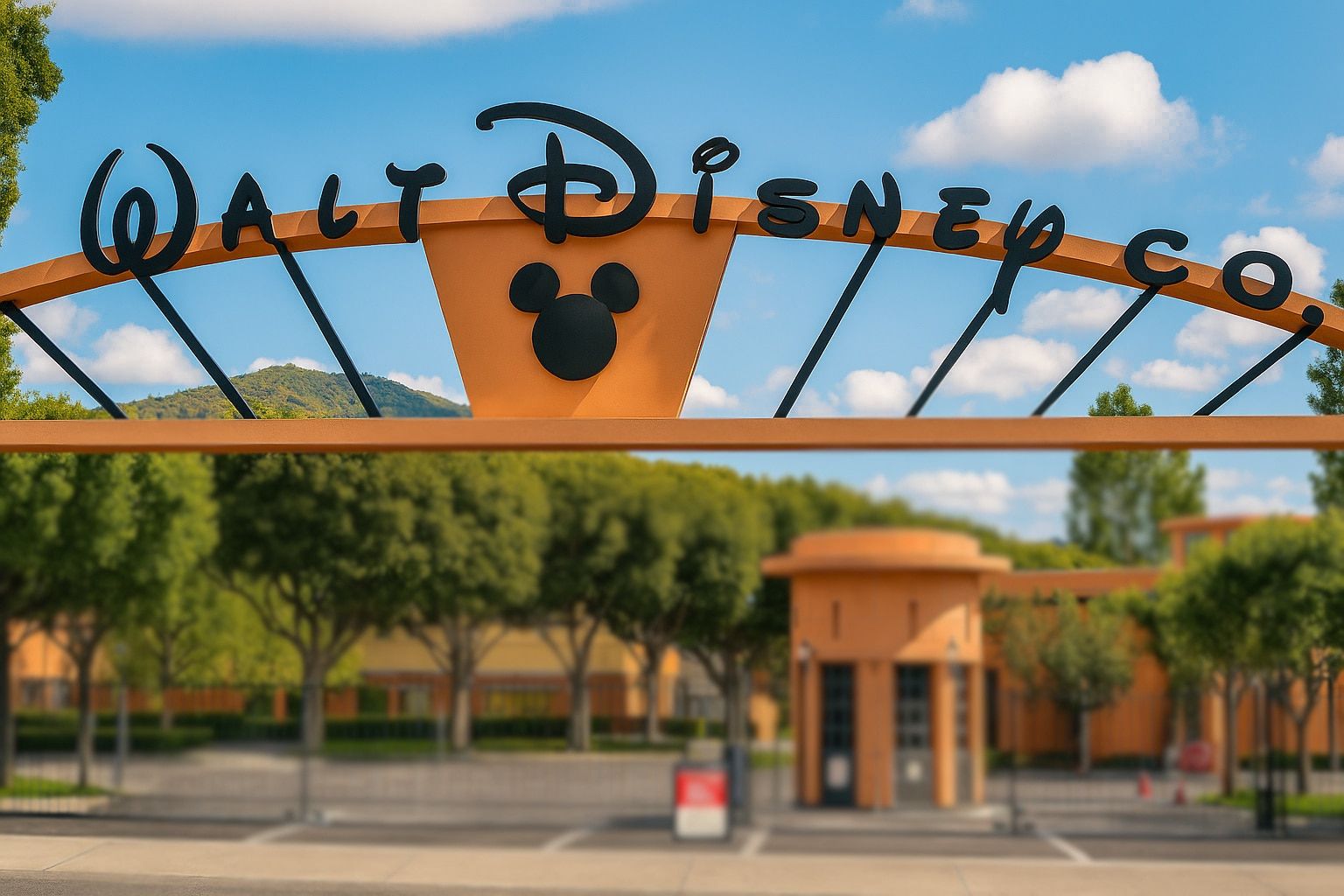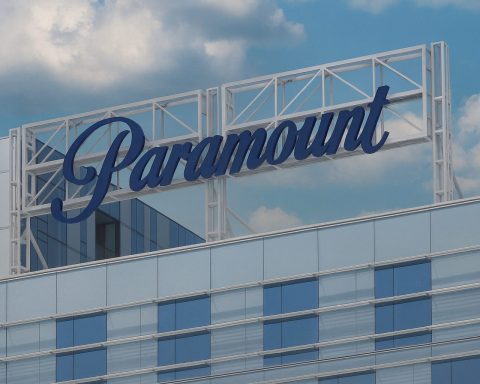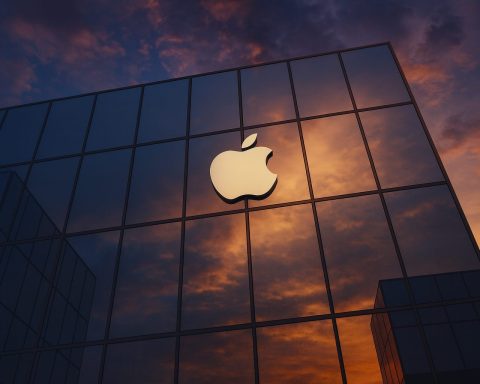Updated: November 16, 2025
Key Takeaways
- Disney stock (NYSE: DIS) is trading around $105–106 as of the close on Friday, November 14, down roughly 8% since reporting fiscal Q4 2025 earnings and near the lower half of its 52‑week range of about $80 to $125. [1]
- Q4 2025 was a “mixed” quarter: revenue slipped ~0.5% year over year to $22.46 billion and missed expectations, even as adjusted EPS of $1.11 beat consensus and full‑year adjusted EPS jumped 19% to $5.93. [2]
- Streaming and parks are the bright spots: Disney’s direct‑to‑consumer (DTC) streaming business produced $352 million of operating profit in Q4 and ~$1.3 billion for the full year, versus a $4 billion loss three years ago, while the Experiences segment (parks, cruises, resorts) delivered record operating income of about $10 billion. [3]
- November 2025 brought heavy headlines: a YouTube TV blackout and then a new carriage deal, a fresh ESPN betting partnership with DraftKings, Disney+ price hikes, ESPN’s new standalone streaming service, and an extended contract for CFO Hugh Johnston through 2029. [4]
- Wall Street is still bullish: across multiple aggregators, analysts see roughly 25–30% upside over the next 12 months, with average price targets clustering around $134–138 and a consensus rating of “Buy” or “Strong Buy.” [5]
This article is for general information and journalism purposes only and is not financial advice.
Disney Stock Today: Price, Valuation and Recent Performance
As of the most recent close (Friday, November 14, 2025), Disney stock trades around $105.80. [6]
- 52‑week range: roughly $80.10 – $124.69 [7]
- Market cap: about $189 billion [8]
- Trailing P/E ratio: around 15–16x earnings [9]
- Trailing dividend: ~$1.00 per share (yield ≈ 0.9–1.0%) [10]
Short‑term performance has turned negative following earnings:
- Over the past week, DIS is down a bit more than 4%.
- Over the past month, the stock has fallen about 5%.
- Over the past 12 months, it’s down roughly 4%, lagging the S&P 500. [11]
MarketWatch estimates that, year‑to‑date, Disney shares are down about 4% in 2025, while the S&P 500 is up roughly 15%, underscoring investor frustration despite genuine operational progress in streaming and parks. [12]
Valuation‑wise, a mid‑teens earnings multiple on a globally recognized IP powerhouse with high‑margin parks and a now‑profitable streaming business suggests the market is cautiously optimistic but not exuberant. The recent sell‑off reflects skepticism about near‑term growth more than an outright loss of faith in the brand.
November 2025: The News Moving Disney Stock
November has been packed for Disney shareholders. Here are the most important storylines behind the recent volatility.
1. Q4 FY25 Earnings: Revenue Miss, Profit Progress
On November 13, Disney reported fiscal Q4 2025 and full‑year results. [13]
Headline numbers (quarter ended September 27, 2025): [14]
- Revenue: $22.46 billion (flat year over year, down ~0.5%, and slightly below analyst expectations around $22.75 billion).
- Total segment operating income: $3.48 billion (down 5% from $3.66 billion in the prior‑year quarter).
- GAAP EPS: $0.73 vs. $0.25 a year ago.
- Adjusted EPS: $1.11 vs. $1.14 last year (‑3%), but ahead of consensus estimates (~$1.04–1.05).
For the full fiscal year 2025: [15]
- Revenue: $94.4 billion (+3% vs. 2024).
- Total segment operating income: $17.6 billion (+12%).
- GAAP EPS: $6.85 vs. $2.72.
- Adjusted EPS: $5.93 (+19% vs. $4.97).
So why did the stock drop?
The trouble spots were exactly where investors expected:
- Entertainment segment revenue fell 6% in Q4 to $10.2 billion, and operating income plunged 35% to $691 million, driven by weak film performance and ongoing declines in linear TV. [16]
- Linear Networks revenue dropped 16% and operating income 21% as cord‑cutting, lower advertising, and the prior‑year contribution of Star India weighed on results. [17]
- The Content Sales/Licensing business swung from a positive $316 million in Q4 2024 to a loss of $52 million, facing brutally tough comparisons against 2024’s record theatrical hits Inside Out 2 and Deadpool & Wolverine. [18]
MarketWatch notes that this was Disney’s second consecutive revenue miss and the first annual revenue decline in five years when adjusted for portfolio changes, even though streaming and parks performed well. [19]
2. Stock Reaction: A Sharp November Sell‑Off
Investors didn’t shrug off the revenue miss. On November 13, Disney shares fell about 7.8–8.5%, ranking among the worst performers in the S&P 500 that day and hitting a six‑month low. [20]
The sell‑off reflects:
- Concerns that linear TV and film softness could overwhelm streaming gains. [21]
- Anxiety around carriage disputes (especially with YouTube TV) and political flashpoints (like the Jimmy Kimmel controversy). [22]
- Skepticism about whether management can hit ambitious 2026–27 guidance without more macro help. [23]
In other words, the market sees execution risk, not outright failure.
3. Dividend Hike, Bigger Buybacks and 2026 Guidance
Lost in the earnings‑day drama: Disney is leaning into shareholder returns and offering unusually detailed guidance. [24]
From the Q4 release and commentary:
- The board declared a cash dividend of $1.50 per share for fiscal 2026, up 50% from last year’s $1.00, payable in two installments of $0.75 in January and July 2026. [25]
- Disney plans to double share repurchases to $7 billion in fiscal 2026 vs. 2025. [26]
- Management is guiding to double‑digit adjusted EPS growth in both FY 2026 and FY 2027, supported by:
- A target 10% operating margin for the Entertainment DTC streaming business by 2026.
- High‑single‑digit operating income growth for Experiences.
- Low‑single‑digit growth for Sports, weighted to late 2026. [27]
- Disney plans about $24 billion in content investment and $9 billion in capex in FY 2026, funded by roughly $19 billion in operating cash flow. [28]
At today’s price, that $1.50 dividend implies a forward yield of roughly 1.4%, modest but clearly moving up from the symbolic dividends of the past few years.
4. YouTube TV Blackout Ends – But Linear TV Risks Are Real
Another November storyline: the ESPN/ABC blackout on YouTube TV and its resolution.
- On October 30, Disney channels — including ABC, ESPN, FX and National Geographic — went dark on YouTube TV after a carriage‑fee dispute. [29]
- More than 8 million YouTube TV subscribers lost access to key sports and news events, including NFL Monday Night Football, college football, and even U.S. election coverage, prompting subscriber threats to cancel. [30]
- Analysts at Morgan Stanley estimated the blackout could cost Disney about $30 million in revenue per week, or around $60 million over 14 days. [31]
On November 14, Disney and YouTube TV announced a new multiyear carriage deal, restoring all Disney networks to the service. Reuters reports that ESPN’s full lineup, including ESPN Unlimited, is slated to be included for base‑plan YouTube TV subscribers by the end of 2026. [32]
For investors, this episode is a double‑edged signal:
- Positive: Disney retains distribution on one of the fastest‑growing pay‑TV platforms and extends reach for its new ESPN DTC offering. [33]
- Negative: It highlights how fragile traditional TV economics have become, as every renegotiation can trigger real subscriber and revenue risks.
5. ESPN’s Big Streaming & Betting Pivot
ESPN is central to Disney’s long‑term thesis, and 2025 has been transformational.
New ESPN direct‑to‑consumer service
On August 21, ESPN launched its long‑anticipated standalone streaming service, branded simply ESPN, and a revamped ESPN app: [34]
- Two tiers:
- The service is deeply integrated with Disney+ and Hulu bundles, with promotional pricing of $29.99/month for all three in the first year. [37]
- This follows major new content deals, including ESPN becoming the U.S. streaming home for WWE premium events like WrestleMania starting in 2026, alongside a deal to acquire rights to NFL Network, NFL Fantasy, and RedZone distribution. [38]
In Disney’s Q4 commentary, management highlighted ESPN’s digital shift and noted that ratings across ESPN networks, including ESPN on ABC, were up about 25% year over year in Q4, bolstering the case that premium live sports remain a powerful draw. [39]
ESPN betting pivot: from PENN to DraftKings
On November 6, Reuters reported that ESPN terminated its 10‑year U.S. online sports betting partnership with Penn Entertainment early and signed a new deal making DraftKings its official sportsbook and odds provider. [40]
Key points:
- DraftKings’ sportsbook and daily fantasy products will be embedded across ESPN platforms, including its direct‑to‑consumer streaming service. [41]
- DraftKings gets a branded betting tab inside the ESPN app; ESPN repurposes the ESPN BET brand for betting‑centric programming and content, while actual wagering routes to DraftKings. [42]
- The prior Penn deal, which paid ESPN about $150 million per year plus stock warrants, will cease generating cash in Q4 2025. Disney keeps vested warrants representing nearly 8 million Penn shares; unvested warrants are forfeited. [43]
This move signals Disney’s intent to monetize ESPN more aggressively in betting, but via a capital‑light partnership rather than running its own sportsbook balance sheet.
6. Streaming Price Hikes and Disney+ Innovation
In September, Disney announced another round of Disney+ price increases, the fourth consecutive year of hikes. [44]
- U.S. ad‑supported Disney+ goes up $2 to $11.99/month.
- Ad‑free premium Disney+ jumps $3 to $18.99/month (annual price to $189.99).
- Bundles with Hulu and ESPN+ also see increases.
The strategy is clear: now that streaming is profitable, Disney is:
- Trading some subscriber growth for higher ARPU, and
- Using bundles plus ESPN DTC to justify the higher price stack.
On the Q4 call and in follow‑up interviews, CEO Bob Iger also teased more ambitious plans for Disney+, including AI‑driven personalized short‑form content, game‑like features via the Epic Games partnership, and integrated e‑commerce that links streaming to park and cruise bookings. [45]
The risk, of course, is churn — especially as Netflix, Amazon, and others intensify competition and consumers get more price‑sensitive.
7. Management Stability Ahead of a 2026 CEO Transition
On November 12, Disney extended the contract of CFO Hugh Johnston from December 31, 2026 to January 31, 2029, increasing his long‑term equity award to $16.5 million while leaving salary and bonus targets unchanged. [46]
Reuters notes that Johnston, a former PepsiCo CFO, is a key architect of Disney’s restructuring — cost cuts, streaming profitability, and balance‑sheet discipline — as the company heads into a pivotal board election in 2025 and prepares to select a new CEO in early 2026, ahead of Iger’s planned retirement at the end of that year. [47]
A special board committee is running the succession process; reporting suggests internal candidates Josh D’Amaro (Experiences) and Dana Walden (Entertainment) are front‑runners, with discussions of a possible co‑CEO model. [48]
For investors, this means:
- Continuity in financial leadership through at least FY 2028.
- Uncertainty — but also opportunity — around the next CEO, who will inherit a very different Disney than the pre‑streaming version.
Inside Disney’s Fundamentals: Streaming, Sports and Experiences
Streaming & Entertainment
From the Q4 and full‑year breakdown: [49]
- Entertainment segment Q4 revenue: $10.21 billion (‑6% YoY)
- Entertainment segment Q4 operating income: $691 million (‑35% YoY)
Within Entertainment:
- Direct‑to‑Consumer (DTC) streaming
- Q4 revenue +8% YoY to $6.25 billion.
- Q4 operating income rose 39% to $352 million.
- Full‑year DTC operating income climbed to about $1.33 billion, up from just $143 million in 2024 — a roughly tenfold increase. [50]
- Combined Disney+ and Hulu subscribers reached 196 million, including 132 million Disney+ subs, up 12.4 million and 3.8 million respectively vs. Q3. [51]
- Linear Networks (traditional TV)
- Q4 revenue down 16% and operating income down 21%, hurt by lower advertising, fewer subscribers, and the deconsolidation of Star India. [52]
- Content Sales/Licensing and Other
- Q4 revenue fell 26%, and operating income turned negative due to weaker theatrical performance vs. last year’s blockbuster slate. [53]
Takeaway: Disney has successfully turned streaming into a profit engine, but the broader Entertainment segment is still buffeted by film volatility and linear‑TV decline. For the stock to rerate meaningfully higher, investors will want to see:
- Sustained DTC profitability with rising margins;
- A more consistent film slate after the 2024 super‑cycle;
- Stabilization or managed decline in linear TV, ideally aided by distribution deals like the one with YouTube TV.
Sports (ESPN)
From the Sports segment: [54]
- Q4 revenue: $3.98 billion (+2% YoY)
- Q4 operating income: $911 million (‑2% YoY)
Full‑year Sports operating income climbed 20% to $2.88 billion, even though Q4 faced higher marketing and production costs. Domestic ESPN advertising revenue grew 8% in Q4, reflecting robust demand for live sports. [55]
With the ESPN DTC launch, WWE and NFL‑related deals, and the DraftKings partnership, Sports stands out as:
- A steady cash generator today, and
- A potential high‑growth digital asset if Disney can scale ESPN streaming profitably without overpaying for future rights.
Experiences (Parks, Cruises, Consumer Products)
The Experiences segment has been Disney’s quiet powerhouse. [56]
- Q4 revenue: $8.77 billion (+6% YoY)
- Q4 operating income: $1.88 billion (+13% YoY)
- Full‑year operating income: a record $10.0 billion, up 8% vs. 2024.
Highlights:
- Strong growth at both U.S. and international parks; Q4 operating income rose 9% domestically and 25% internationally. [57]
- Disney is investing heavily in park expansions at all major resorts, plus two new cruise ships (Disney Destiny in November 2025 and Disney Adventure in March 2026) and a new theme park planned for Abu Dhabi. [58]
Experiences provides:
- High‑margin, recurring cash flow;
- A hedge against streaming competition;
- A physical‑world funnel for monetizing Disney’s IP.
Disney Stock Forecast: What Wall Street Expects for 2026
Across multiple analyst aggregators updated this month, the consensus view on Disney stock is positive:
- Average 12‑month price targets:
Depending on the source, that implies roughly 25–30% upside from the recent ~$106 share price.
Recent notes show:
- Evercore ISI raising its target to $142 with an “Outperform” rating. [64]
- Goldman Sachs reiterating a Buy with a $152 target, at the high end of the range. [65]
- Jefferies trimming its target from $144 to $136 but keeping a Buy rating. [66]
- Other firms like Needham, Guggenheim, and Rosenblatt also maintain Buy ratings, with targets clustered in the $125–140 band. [67]
On ratings:
- Aggregators consistently show “Buy” or “Strong Buy” consensus, with no major firms publicly rating Disney a Sell as of mid‑November. [68]
Wall Street’s thesis, in short:
The Q4 sell‑off reflects near‑term noise (linear TV, film comps, YouTube TV dispute) more than a change in the long‑term story: profitable streaming, growing parks, and a powerful IP portfolio under a still‑disciplined capital plan.
Scenario Thinking: How Could Disney Stock Trade Over the Next 12–24 Months?
No one can predict exact prices, but based on current fundamentals, guidance, and Street expectations, you can think in scenarios rather than single‑point forecasts.
Bull Case (optimistic)
Assumptions:
- Entertainment DTC hits or beats its 10% margin target by FY 2026, with continued subscriber and ARPU growth despite price hikes. [69]
- Parks & Experiences sustain high‑single‑digit operating income growth driven by new cruise ships and park expansions. [70]
- ESPN DTC and DraftKings partnership gain traction without materially diluting margins. [71]
- Macro conditions stay supportive (no deep recession hitting travel and advertising).
In this setup, Disney could plausibly outperform consensus EPS and convince the market that the worst of linear‑TV decline is being offset by streaming and parks. In such a scenario, it’s reasonable (based on existing analyst targets) to imagine DIS trading toward the upper end of the current target range, roughly the mid‑$140s to low‑$150s, matching bullish targets from firms like Goldman Sachs. [72]
Base Case (consensus‑like)
Assumptions:
- Results broadly track Disney’s guidance: double‑digit EPS growth in 2026–27, but with occasional revenue misses and pockets of volatility. [73]
- Linear TV keeps shrinking, but not catastrophically; ESPN DTC offsets some of the decline. [74]
- Parks growth decelerates but remains positive.
Here, the stock gradually grinds toward consensus price targets in the mid‑$130s to high‑$130s over 12–18 months, delivering something close to the ~25–30% upside implied by the current average targets. [75]
Bear Case (downside)
Assumptions:
- Streaming growth stalls as price hikes trigger higher churn, while content spending ramps to $24 billion. [76]
- The advertising market weakens, and further carriage disputes emerge beyond YouTube TV. [77]
- Experiences growth slows sharply if consumer spending cools, especially on travel.
In that scenario, the market could lose faith in the 2026–27 EPS roadmap, potentially pushing DIS back toward the low‑$100s or even retesting the ~$80 52‑week low if earnings estimates come down meaningfully. [78]
Major Risks for Disney Shareholders
Regardless of your view, several risk factors are hard to ignore:
- Structural decline in linear TV
Cord‑cutting, advertising volatility, and frequent carriage battles (like the YouTube TV blackout) will likely continue to pressure linear networks revenue and margins. [79] - Content and box‑office risk
The swing from blockbuster‑driven profit to a Q4 content loss shows how dependent Disney remains on hit films and franchises. Another weak slate would prolong pressure on Entertainment earnings. [80] - Execution risk in streaming and sports rights
A misstep on sports rights costs, or an overbuild of content spend relative to subscriber growth, could erode the profitability Disney just worked so hard to achieve. [81] - Regulatory and reputational risk around betting & politics
The ESPN‑DraftKings integration, while potentially lucrative, puts Disney closer to regulated gambling. At the same time, culture‑war controversies around content and personalities (e.g., Jimmy Kimmel) could affect both brand perception and political pressure. [82] - Leadership transition
With Iger scheduled to step down at the end of 2026 and the successor to be named in early 2026, any sign of board disagreement or a poorly received pick could create uncertainty and volatility. [83]
Is Disney Stock a Buy Right Now?
Whether Disney is a “buy” for you depends heavily on your time horizon, risk tolerance, and portfolio needs. This article can’t make personalized recommendations, but here’s how different types of investors might look at DIS:
Long‑Term Growth Investors
- Pros:
- Cons:
- Ongoing structural decline in linear TV.
- Near‑term earnings volatility around film slates and macro conditions.
- Leadership succession risk.
For patient investors willing to ride out volatility, Disney resembles a complex but potentially rewarding turnaround plus quality‑compounder story.
Income‑Focused Investors
- The dividend yield, even after a 50% bump to $1.50 per share, is still modest (around 1.4% forward at current prices), far below many classic income stocks. [87]
- However, if management keeps raising the dividend as EPS grows, Disney could evolve into a more meaningful income plus growth name over several years.
Short‑Term Traders
- Expect choppy trading around any news on streaming metrics, ESPN subscriber growth, YouTube TV economics, or CEO succession headlines.
- The post‑earnings gap lower might attract traders looking for a technical rebound, but the same volatility that created the opportunity can work both ways.
Quick Snapshot: Disney Stock Metrics (as of November 16, 2025)
- Ticker: DIS (NYSE)
- Recent price: ≈ $105.80 [88]
- 52‑week range: ≈ $80.10 – $124.69 [89]
- Market cap: ≈ $189 billion [90]
- Trailing P/E: ~15–16x [91]
- Trailing dividend: $1.00 per share (~0.95% yield); FY 2026 dividend declared at $1.50 (≈1.4% forward yield at current prices). [92]
- Analyst consensus: “Buy” to “Strong Buy”; average 12‑month target around $134–138 (~25–30% implied upside). [93]
Bottom Line
Disney in late 2025 is a study in contrasts. Streaming and parks are performing well, with DTC finally profitable and Experiences setting records. Yet linear TV and a softer film slate are pulling the numbers down, and the stock has paid the price with an earnings‑driven sell‑off.
If Disney can execute on its 2026–27 growth roadmap, navigate the CEO transition smoothly, and keep expanding ESPN and Disney+ without crushing margins, the current valuation gives the stock room to rerate higher over the medium term. If not, the November drop could prove to be the market’s way of saying that the “magic” is already fully priced in.
Either way, DIS remains one of the most closely watched turnaround stories in global media — and November 2025 has only raised the stakes.
References
1. www.marketwatch.com, 2. licensinginternational.org, 3. thewaltdisneycompany.com, 4. www.reuters.com, 5. www.marketbeat.com, 6. www.tradingview.com, 7. www.marketwatch.com, 8. www.marketwatch.com, 9. public.com, 10. public.com, 11. www.tradingview.com, 12. www.marketwatch.com, 13. thewaltdisneycompany.com, 14. licensinginternational.org, 15. licensinginternational.org, 16. licensinginternational.org, 17. licensinginternational.org, 18. licensinginternational.org, 19. www.marketwatch.com, 20. www.investopedia.com, 21. www.investopedia.com, 22. www.reuters.com, 23. licensinginternational.org, 24. licensinginternational.org, 25. licensinginternational.org, 26. licensinginternational.org, 27. licensinginternational.org, 28. licensinginternational.org, 29. www.reuters.com, 30. www.washingtonpost.com, 31. www.businessinsider.com, 32. www.reuters.com, 33. www.reuters.com, 34. espnpressroom.com, 35. www.emarketer.com, 36. www.emarketer.com, 37. thewaltdisneycompany.com, 38. apnews.com, 39. thewaltdisneycompany.com, 40. www.reuters.com, 41. www.reuters.com, 42. www.reuters.com, 43. www.reuters.com, 44. www.reuters.com, 45. www.theverge.com, 46. www.reuters.com, 47. www.reuters.com, 48. businesschief.com, 49. licensinginternational.org, 50. licensinginternational.org, 51. licensinginternational.org, 52. licensinginternational.org, 53. licensinginternational.org, 54. licensinginternational.org, 55. licensinginternational.org, 56. licensinginternational.org, 57. licensinginternational.org, 58. thewaltdisneycompany.com, 59. www.marketbeat.com, 60. stockanalysis.com, 61. www.tipranks.com, 62. www.nasdaq.com, 63. public.com, 64. www.gurufocus.com, 65. www.investing.com, 66. www.gurufocus.com, 67. www.benzinga.com, 68. stockanalysis.com, 69. licensinginternational.org, 70. licensinginternational.org, 71. espnpressroom.com, 72. www.investing.com, 73. licensinginternational.org, 74. licensinginternational.org, 75. www.marketbeat.com, 76. www.reuters.com, 77. www.reuters.com, 78. www.marketwatch.com, 79. licensinginternational.org, 80. licensinginternational.org, 81. licensinginternational.org, 82. www.reuters.com, 83. www.reuters.com, 84. licensinginternational.org, 85. licensinginternational.org, 86. public.com, 87. licensinginternational.org, 88. www.tradingview.com, 89. www.marketwatch.com, 90. www.marketwatch.com, 91. public.com, 92. licensinginternational.org, 93. www.marketbeat.com










